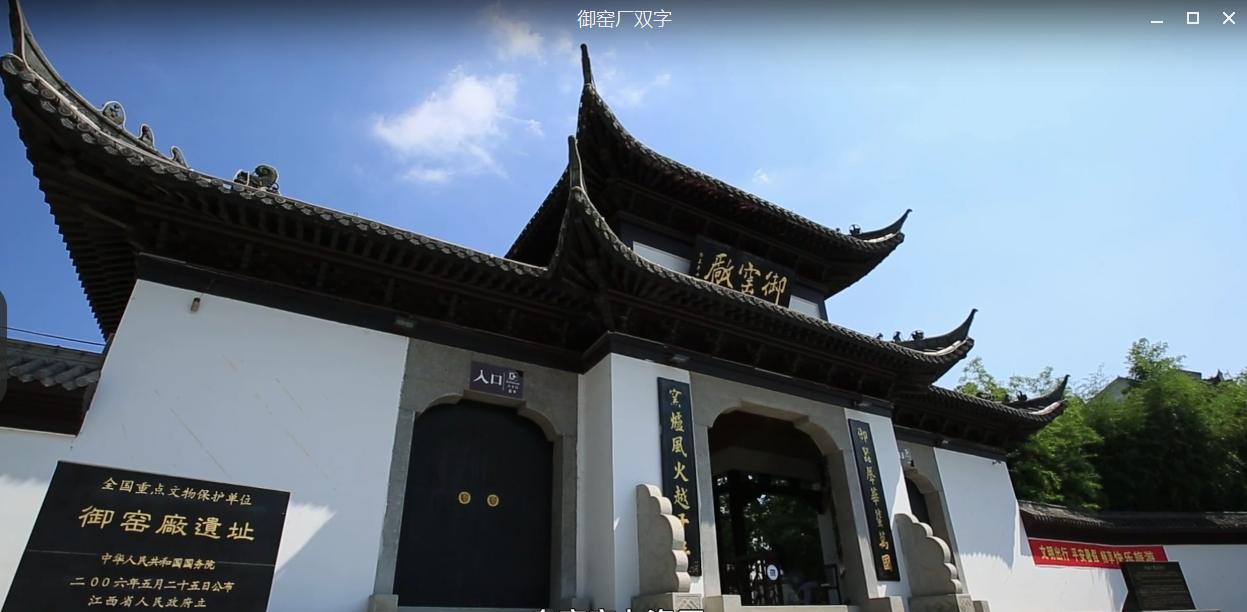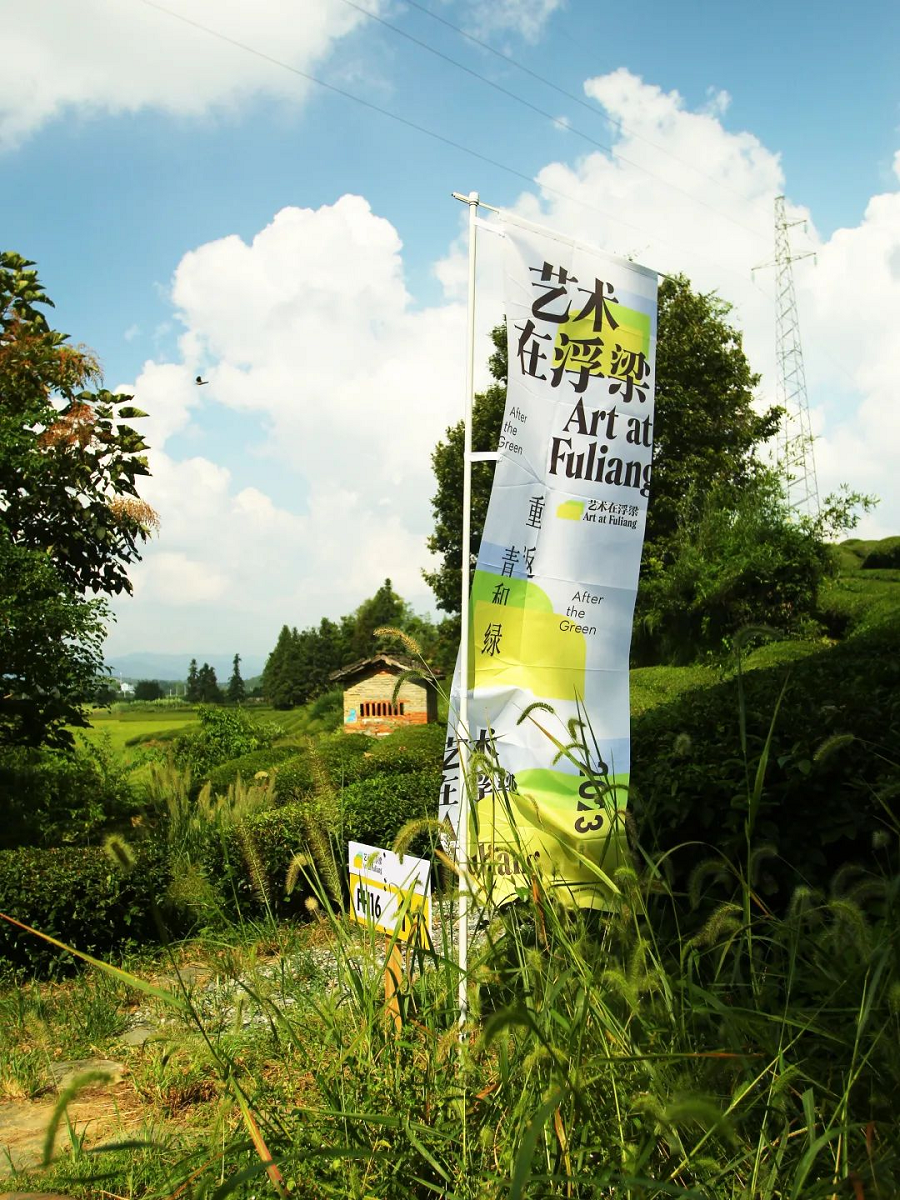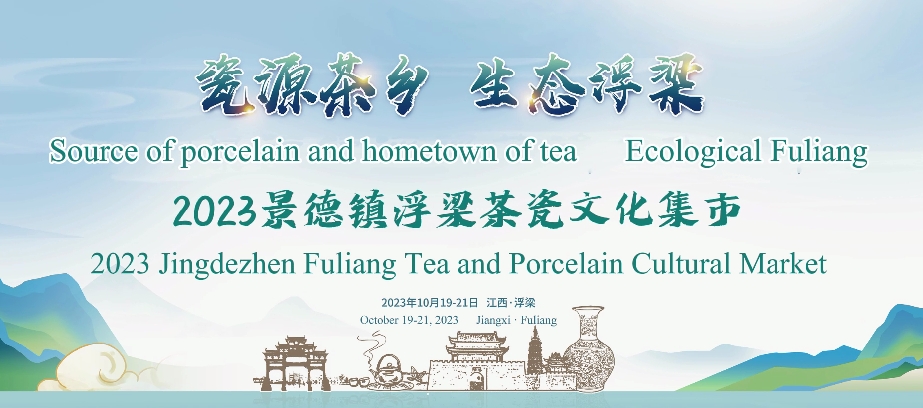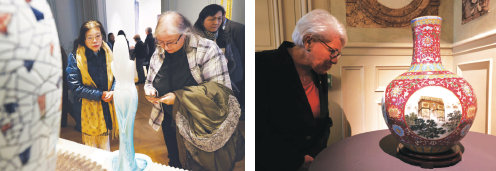
Visitors to the China Cultural Center in Paris, France check out examples of Jingdezhen ceramics during a special exhibition that ended on Feb 18. The pieces on display included Harmony in Gold and Jade, Hearts Gather from Four Seas (right), from the Feng kiln. XINHUA
Iconic pieces from 'China's ceramic capital' tell story dating back thousands of years
One of the main opening events in 2024 Sino-French Cultural Tourism Year drew enthusiastic visitors to the China Cultural Center in Paris, France seeking a rare chance to see iconic ceramics from Jingdezhen, East China's Jiangxi province, up close.
The special exhibition of Jingdezhen ceramics and their surrounding culture, named The Silk Road Porcelain Tour, was open to the public from Jan 30 to Feb 18.
It featured 48 ceramic pieces created in Jingdezhen, which has been known as "China's ceramic capital "for thousands of years. Some were copies of pieces created in various dynasties, from the distant past all the way through to contemporary work.
The exhibition showcased the Chinese craftsmanship spirit of striving for excellence and the idea of innovation and dialogue with the world, said organizers.
It was jointly organized by the information bureau and department of culture and tourism of Jiangxi provincial government, Jingdezhen municipal government and the China Cultural Center in Paris, France.
Yue Jun, director of the Jingdezhen Art Museum, said during a lecture delivered on the opening day of the exhibition that the true genesis of Chinese ceramics extends all the way back to the Shang Dynasty (c.16th century-11th century BC) with the emergence of the technique of glazing.
But he said there is a distinction between what we call "pottery" and what is known as "porcelain", with the firing temperatures for pottery ranging from 800 C to 1,000 C and those for porcelain ranging from 1,200 C to 1,400 C.
Kiln technology was not advanced enough for porcelain production until the time of the Song Dynasty (960-1279). Ceramics that predate that time should be properly called pottery.
Through the annals of time, ceramic art has evolved, progressing in terms of the materials used, craftsmanship, decoration, and other facets, and the variations have given rise to a range of diverse styles and schools.
Royal approval
The Jingdezhen kiln emerged in the early 10th century, during the Tang Dynasty (618-907) and the Five Dynasties and Ten Kingdoms period (907-960), which disrupted the paradigm of "southern green and northern white" ceramics prevalent during the earlier part of the Tang Dynasty.
By the time of the Song Dynasty, kilns in Jingdezhen had evolved to become the best in China and the region had started to pioneer its iconic blue and white porcelain.
The appellation "Jingdezhen" was bestowed by Emperor Zhenzong of the Northern Song Dynasty (960-1127) in 1004 AD.
Yue explained that, from the time of the Tang Dynasty through to the present day, ceramic art has continued to flourish in China. During its long history, the country has seen the creation of renowned kilns and porcelain varieties, and ceramic art has become one of the most important representatives of Chinese culture in the world and made invaluable contributions to global civilization.
Trade in ceramics between China and the West started in the 8th century, during the Tang Dynasty, Yue said.
In the 17th century, during the Ming Dynasty (1368-1644) and Qing Dynasty (1644-1911), the export of Chinese ceramics reached its zenith, with more than 100 million Chinese porcelain products exported, according to Yue.
Today, ceramic trade between China and the West has continued to be vibrant. "In Jingdezhen, various types of porcelain can be customized to suit individual preferences," Yue said.
Traditional Chinese ceramic works often feature animal motifs imbued with important connotations. For instance, the word for chicken in Chinese — ji — sounds similar to the word for auspicious, so the chicken motif is often used to represent auspiciousness.
A replica of Chicken Cup in doucai style, a bowl-shaped imperial porcelain piece made during the reign of Emperor Chenghua (1465-1487) in the Ming Dynasty, is an example of this symbolism that was on display at the exhibition. Doucai, which means "contrasting colors", is a porcelain enamelling technique.
The original iteration of the masterpiece was auctioned at Sotheby's in Hong Kong in April 2014 for 280 million yuan ($39 million), which set a new global auction record for Chinese porcelain.
More than 180 Chinese and French guests attended the opening ceremony of the porcelain exhibition, including Anne-Marie Raffarin, wife of former prime minister of France Jean-Pierre Raffarin, Liu Hongge, director of the China Cultural Center in Paris, and Josiane Gaude, deputy mayor of the 7th arrondissement of Paris.
Chen Li, minister counselor at China's Embassy in France, said at the opening of the exhibition that Chinese porcelain shares similarities and differences with French porcelain, just as the Chinese and French people do.
Despite any differences between the two peoples, Chen said, they have been able to understand and appreciate each other for the past 60 years, during which diplomatic relations have been in place.
Dong Zhen, deputy director of the publicity department at Jingdezhen municipal party committee, said: "Jingdezhen, with a history of over 2,000 years of pottery smelting, has become an important window for China to go global and for the world to understand China."
She said the ceramics produced there have witnessed the profound fraternal friendship between China and France. Bilateral cultural exchanges have continued and flourished since the time of the boom in porcelain trade between the countries in the 18th century, all the way through to the establishment of a sister-city relationship between Jingdezhen and Limoges, France in 2010, and beyond.
"This exhibition is captivating, and I am delighted to be here," said Yannick Lintz, director of Guimet National Museum of Asian Arts in Paris.
"I dream of going to China and discovering this great porcelain capital of the world there. At the Guimet Museum, we showcase remarkable examples of Chinese porcelain creation, and the displayed items here are very beautiful."
Through to the present
Remy Aron, president of the House of Artists Association in France, said he got to see Jingdezhen for himself last year. During his two-week visit, he had the opportunity to appreciate both the process through which porcelain is made and the artists who create it.
"They are very open-minded toward modernity and tradition," he said of the craftspeople.
Olga Cuxart Oriol, a young Spanish artist who is one of the small number of overseas craftspeople resident in Jingdezhen, was a representative of the modern-era artists at the exhibition, with one of her works, a porcelain cup titled All Living Beings, among items on display.
Monique and Marcello Ernst, a French couple fervent about contemporary ceramics and art, visited the exhibition.
"We are not experts in Chinese ceramics, but obviously, we are very interested in the forms, techniques, colors, and influence, including the exchanges between the continents," Monique said.
"In the 9th and 10th centuries, all of this was already very developed, showcasing an extremely advanced technique and societies that have exchange and dialogue abilities."
Marcello said it seemed to him that, over time, ceramics "gradually became an object through which we wanted to create emotions".
He said ceramics went on to represent civilization, and "little by little, an extraordinary rise emerged: China developed its own approach… with artists who have developed their own ways of expression."
"This is a formidable adventure of the human spirit," he said.
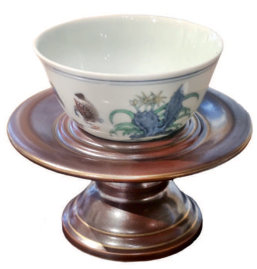
A replica of the famed Chicken Cup from the Ming Dynasty. CHINA DAILY
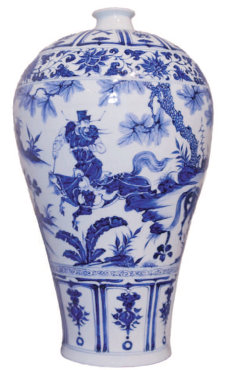
A copy of a blue and white porcelain vase in the style of Yuan Dynasty, which contains a scene decoration that shows Xiao He chasing Han Xin under the moon. THE CHINA CULTURAL CENTER IN PARIS
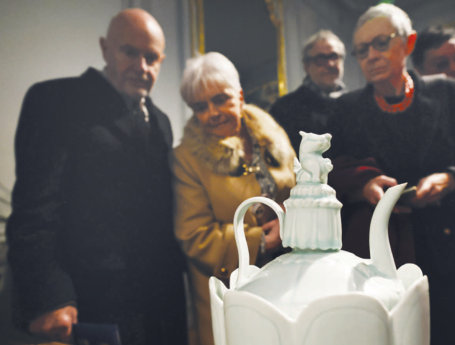
People study an exquisite replica of Porcelain Flagon in the style of Song Dynasty, which was made by Duan Chenggang, at the exhibition in Paris, France. XINHUA
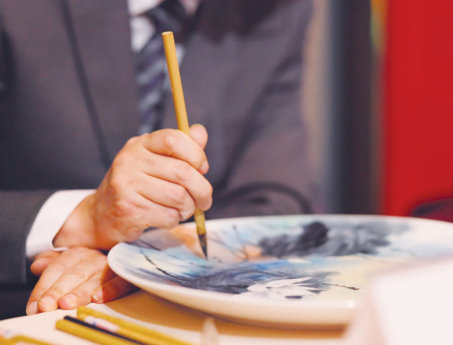
An artist from Jingdezhen demonstrates traditional porcelain painting techniques at the exhibition. THE CHINA CULTURAL CENTER IN PARIS
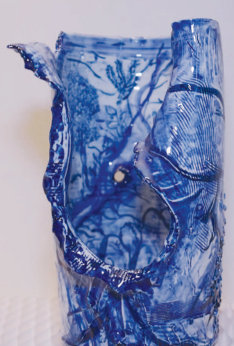
Skinned by Spanish artist Jaume Ribalta. THE CHINA CULTURAL CENTER IN PARIS
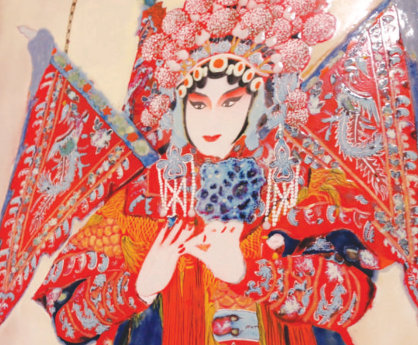
A painting on a glazed porcelain panel Lady Mu Guiying Takes Command by Zhang Zhaohui. THE CHINA CULTURAL CENTER IN PARIS
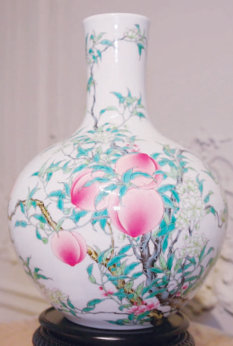
A replica of Globular Vase with Decoration of Nine Peaches in the style of the era of Emperor Qianlong in the Qing Dynasty. THE CHINA CULTURAL CENTER IN PARIS


